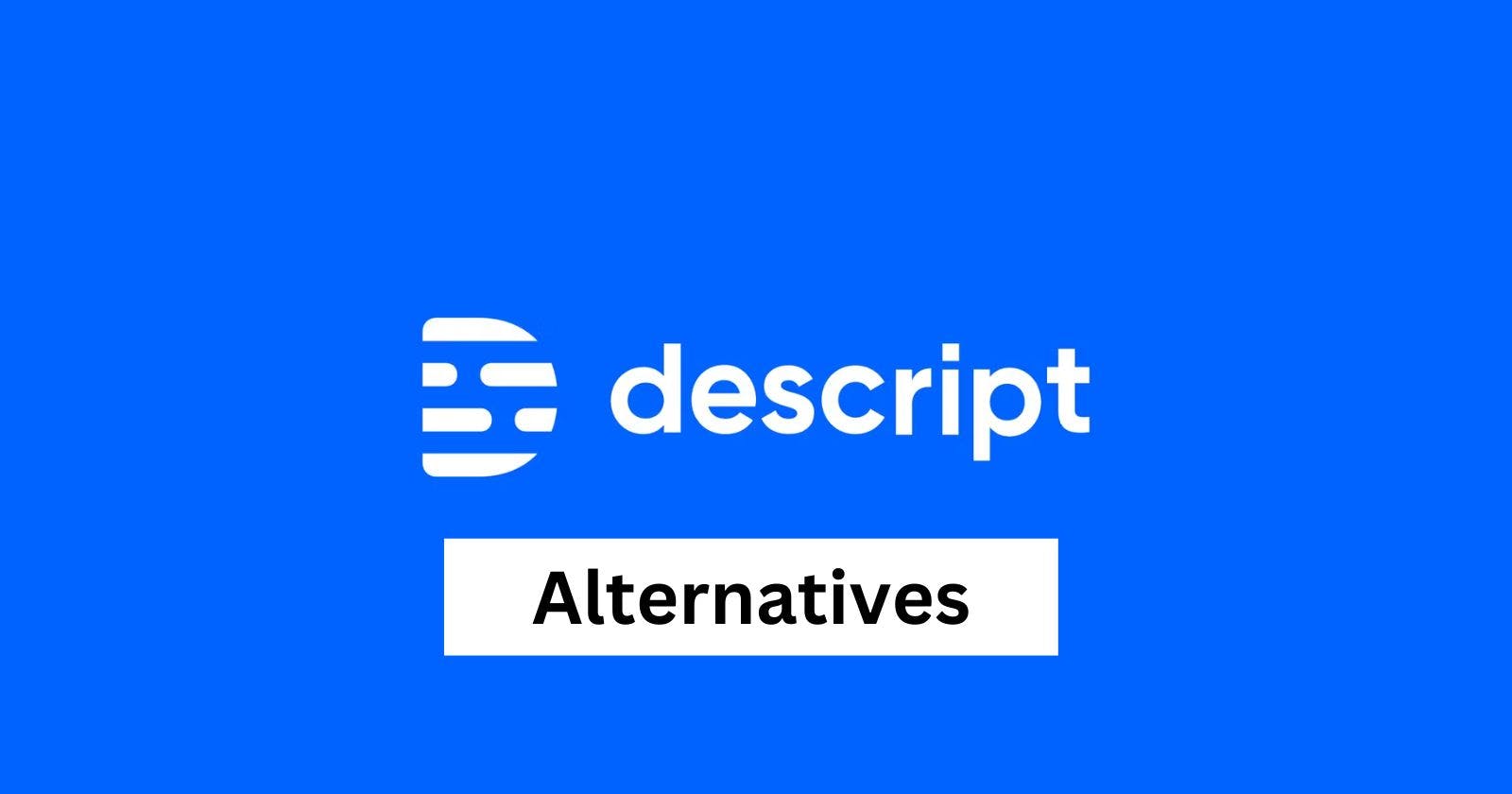If you've done any kind of podcasting, audiobook creation, or voice-based projects recently, chances are you've heard about Descript. This relatively new platform has been gaining major traction as a tool for editing and polishing audio content.
So what exactly is Descript?
In short, it's an audio editing software that makes it easy to edit speech. Some key features include:
Overdubbing - Easily record new audio tracks over existing tracks to fix mistakes or make changes.
Transcription - Built-in transcription makes editing audio as easy as editing text.
Audio editing - Cut, rearrange, and tweak audio content using visual editing tools.
Descript has solved a lot of pain points for podcasters and other audio creators. However, it's not the only option out there. Let's look at some of the top Descript alternatives currently available.
Descript Alternatives for Audio & Speech Editing
1. Anchor
Anchor has been around for a while as a podcast hosting platform. Over time, they've continued building out the product as an all-in-one podcast creation tool.
Some of Anchor's features that can act as Descript replacements:
Audio editing capabilities on hosted content
Transcription and ability to edit transcripts
Recording, editing, hosting and distribution
Free-to-use base product
Overall, Anchor could be a direct competitor to Descript. The transcription and audio editing workflows share similarities across the platforms.
2. Auphonic
Auphonic is an audio processor focused on podcast and voice content. It levels audio, removes noise, fixes volume issues, and can add additional effects.
The transcription and editing capabilities make Auphonic a potential alternative:
Machine-generated speech transcription
Ability to edit content by editing the transcript
Audio restoration and effects
Automatic loudness adjustments
For pure audio cleanup and optimization, Auphonic outpaces Descript. It takes care of a lot of post-production work automatically.
3. Otter.ai
Otter.ai is a voice meeting assistant and transcription tool. It's known for its high-quality real-time speech transcription capabilities.
Otter.ai has the potential to stand in for some Descript features:
Accurate speech-to-text transcription
Ability to edit the transcript to alter the generated audio file
Collaborative transcripts & commenting
The downside of Descript is no native audio editing. But Otter's transcripts may integrate nicely with other audio tools.
4. Subly
A newer entrant, Subly bills itself as "Descript for video". The pitch is similar to transcription-based workflows but for editing video content.
Subly brings Descript-esque features to the video:
Machine transcription of speech in video files
Easy editing by making changes to the text transcript
Replacement speech audio generation
Collaborative subtitling
For those working specifically with subtitling or transcription of video content, Subly presents a compelling alternative to Descript.
5. Wave.video
Wave.video is another video-focused platform with audio & speech capabilities.
It brings real-time collaborative transcription with the ability to edit transcripts to alter final videos.
The value proposition for video creators is improving workflows for collaborators such as editors, transcribers or clients providing feedback.
Key Differences to Descript
The alternatives outlined above provide overlap with some of Descript's capabilities. But there are still some key differentiators that make Descript a unique product:
Overdubbing - Descript's overdubbing workflow that seamlessly layers new audio over existing audio is truly unique for creative audio editing.
Quality speech reconstruction - Descript uses machine learning to generate very natural-sounding speech audio from edited text transcripts. The result sounds more realistic than text-to-speech from other products.
Focus on creative workflows - Descript is built from the ground up with creative audio editing and podcast workflows in mind. The alternatives have more generalized use cases.
So while other tools can replicate pieces of Descript's offering, the full package of creative capabilities creates a fairly unique bundle. For the right use case, Descript may still stand apart as the best end-to-end solution.
Which Tool Is Right for You?
Descript has earned its status as a leader in creative audio editing software. Its compelling vision for simplifying speech editing shows in the product's rapid adoption.
However, it's not to say Descript is the perfect product for every scenario. As this overview of alternatives illustrated, other tools may be better suited depending on your specific needs and budget.
If you're hoping for audio processing and effects, Auphonic has you covered. Collaborative subtitling at scale? Check out Wave Video or Otter.ai. On a budget? Anchor provides free built-in editing.
Before jumping on the Descript bandwagon, take inventory of your workflow needs and content types. There's no one right answer - the best solution comes down to your specific project.
The rapid pace of innovation around machine learning and speech technology ensures creators will continue gaining accessible, creative tools over the coming years. There may even be entirely new post-production paradigms on the horizon.

